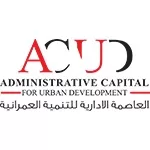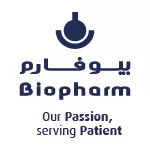How the Gates Foundation’s $2.5 Billion Pledge is Looking to Reshape Women’s Health

I have spent over a decade navigating hospitals, clinics, research labs, and women-led startups. One truth has stayed with me. Women are still seen as an afterthought in health research. We wait longer for diagnoses. We get misdiagnosed more often. Our pain is underestimated. Our needs, from contraceptive access to chronic condition care, are underfunded and underserved.
So when I read that the Gates Foundation has pledged 2.5 billion dollars to women’s health by 2030, I paused. Not because it is a large number, but because it confirms something deeper. Women’s health is finally being treated as the global priority it always should have been.
Why Women’s Health Funding Needs Global Commitment
The Gates Foundation has announced a $2.5 billion pledge toward women’s health R&D. This is not charity. It is a long, long-overdue investment in half the world’s population. The Foundation released the announcement in August 2025, and the commitment will run through 2030. It aims to support work in obstetric care, maternal health and nutrition, gynaecological and menstrual health, contraceptive innovation, and sexually transmitted infections.
While some media reports mention categories like family planning, maternal care, and adolescent health, the Foundation has not published a public breakdown of the funding across specific dollar amounts. This is not just a funding decision. It is a signal to health investors that the field of women’s healthcare is ready for structural transformation.
The Gaps in Women’s Health R&D
When I began writing about women’s health, I was shocked by how frequently conditions were misunderstood or dismissed. Endometriosis, affecting one in ten women, often takes years to diagnose. Studies show the average time to diagnosis ranges between six and ten years. Polycystic Ovary Syndrome is a leading cause of infertility worldwide and still lacks a consistent standard of care. Different diagnostic criteria remain in use around the world, making treatment access uneven.
Maternal mortality remains high in parts of Sub-Saharan Africa and South Asia. These cases are largely preventable. Yet they persist due to underinvestment, access issues, and policy failure. These are not marginal concerns. They are global problems affecting millions of women and their families.
Global Brands and the Business Case for Investment
The widely cited claim that only one percent of healthcare R&D funds target female-specific conditions stems from a 2021 analysis by McKinsey & Company. This figure excludes oncology and focuses on innovation outside cancer research.
The United Nations estimates that 164 million women in low- and middle-income countries have an unmet need for modern contraception. While some references put the figure higher, the verified number remains below 200 million. Around 800 women die every day from preventable causes related to pregnancy and childbirth, according to the WHO. These are sobering, verifiable figures.
The Gates Foundation’s initiative brings visibility to these issues and creates momentum for healthcare companies and investors to get involved in meaningful, measurable ways.
The Gates Foundation’s Role in Women’s Health R&D
Since its founding in 2000, the Gates Foundation has shaped the global health landscape. It has funded vaccines, disease eradication, and health systems development. Now, with a laser focus on women’s health, the Foundation is shifting its weight into an underserved yet critical sector.
The commitment includes investment in contraceptive innovation, maternal health tools, menstrual health solutions, STI treatment strategies, and nutrition support. By focusing on access and delivery, not just invention, the Foundation is building a pipeline that could benefit millions.
Global Brands Already Making Moves
Some brands are already building women-focused healthcare portfolios. Organon, a company formed from a Merck spinoff, is working exclusively in women’s health. Its strategy includes expanding access to contraceptives in underserved markets.
The Concept Foundation is working with governments to deliver affordable and quality-assured reproductive health products. Meanwhile, femtech startups like Clue, Ava, and Natural Cycles are turning data science into personalised health insights for millions of women.
These companies demonstrate that women’s health funding can intersect profit, innovation, and public impact.
What Women Gain From Women’s Health R&D
For women globally, this investment could be life-changing. It offers the chance for earlier diagnoses, more effective treatments, and access to care that respects their bodies and choices. Women will no longer have to rely on healthcare tools designed with male bodies as the default.
This shift also ensures that gender equity moves beyond rhetoric and into clinical pipelines, product design, and global health delivery systems. Whether in Nairobi, New Delhi, São Paulo, or Sydney, women stand to benefit from more responsive and research-driven care.
Barriers That Still Need Addressing
Funding alone cannot fix systemic bias. Clinical research continues to use male-centric models. Regulatory frameworks often fail to approve products specifically designed for women. Stigma still surrounds menstrual health, fertility care, and menopause support.
Policy reform, public education, and gender-sensitive health regulations must evolve in tandem with investment. Otherwise, the benefits of this pledge may remain out of reach for the women who need them most.
A Roadmap for Action
Several steps can accelerate this transformation. Clinical trials must be redesigned to include women’s physiology and hormone cycles. Brands and institutions must support new diagnostics and therapeutic development for conditions like PCOS and endometriosis. Pricing strategies must consider affordability and scale from the outset.
Governments and private stakeholders must collaborate on public health campaigns to dismantle stigma. Only when silence ends can equity begin.
A Personal Reflection From the Field
I once spoke with a young woman in rural Kenya. She lost two pregnancies because she could not reach care in time and received a faulty diagnosis. Now she leads local peer groups that teach girls about reproductive rights and health literacy.
Her journey from patient to advocate is not unique. But it underscores how frontline solutions and top-down funding can reinforce one another. When health systems listen to women, lives improve.
The Global Conversation Has Shifted
This pledge marks a turning point. It moves women’s health from a niche concern to a central theme in global healthcare strategy. It is a challenge to every brand, policymaker, and investor.
Women have waited long enough. It is time to build systems that see them, serve them, and support their health with the seriousness it deserves.








































